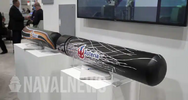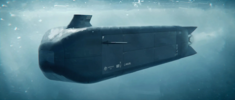- Oct 1, 2014
- 5,780
- 12,375
- AFL Club
- Hawthorn
Hey love, come have a look at my bendy missile......
Follow along with the video below to see how to install our site as a web app on your home screen.
Note: This feature may not be available in some browsers.
Due to a number of factors, support for the current BigFooty mobile app has been discontinued. Your BigFooty login will no longer work on the Tapatalk or the BigFooty App - which is based on Tapatalk.
Apologies for any inconvenience. We will try to find a replacement.
 Fantasy Footy Notice Image
Fantasy Footy Notice ImageSupercoach Round 5 SC Talk - Round 5 SC Trades ,//, AFL Fantasy Round 5 AF Talk - Round 5 AF Trades
Due to a number of factors, support for the current BigFooty mobile app has been discontinued. Your BigFooty login will no longer work on the Tapatalk or the BigFooty App - which is based on Tapatalk.
Apologies for any inconvenience. We will try to find a replacement.

 www.eurasiantimes.com
www.eurasiantimes.com



The Dragonfire laser weapon (UK) was tested a couple of months ago - impressive targeting ability:











 www.australiandefence.com.au
www.australiandefence.com.au


From what I gathered, the mass drone attack was an economic win for Iran since Israel spent a LOT more money to defend against it. War is expensive business.The interception of the vast majority of Iran's drones and missiles in the attack on Israel demonstrated a very effective air defence system. It wasn't just Iron Dome, it was layered, multinational and involved aircraft, ships and ground launch facilities. I think it is the largest missile attack ever successfully engaged. This sadly is a glimpse of a future.
According to this article from the intercept about 150 drones and missiles failed, either at launch or on route. US Forces acting under US CENTCOM claim 80 attack drones and at least six ballistic missiles with 70 drones shot down by aircraft.

U.S., Not Israel, Shot Down Most Iran Drones and Missiles
American forces did most of the heavy lifting responding to Iran’s retaliation for the attack on its embassy in Damascus.theintercept.com
Added - Saw this list of the cost of the missiles used, in USD. Expensive business.
SeaRAM (short-range) is $900K,
ESSM $1.75M,
SM-2 $2.35M(depending on model).
SM-6 is $4.3M.
SM-3 are $12M.
AIM-120 AMRAAM costs 1.1M each.
Aster 15/Sea Viper costs $2.85M each
Also saw USN conforming they used the SM3 anti-ballistic missile (at 12 million a pop) against the medium range ballistic missiles, the first use in combat.

SM-3 Ballistic Missile Interceptor Used for First Time in Combat, Officials Confirm - USNI News
For the first time in combat, guided-missile destroyers fired missiles developed to intercept ballistic missiles during the U.S. response to the Iranian attack on Israel, USNI News has learned. USS Arleigh Burke (DDG-51) and USS Carney (DDG-64), in the Eastern Mediterranean, fired four to seven...news.usni.org
It doesn't seem so long ago FAS said it wouldn't never work, like trying to hit a bullet with a bullet. They were wrong.
Yes, it is expensive.From what I gathered, the mass drone attack was an economic win for Iran since Israel spent a LOT more money to defend against it. War is expensive business.

The Iranians knew full well their mass drone attack was never going to kill anyone; they were counting on Israel pulling out all stops to prevent death and destruction. So it was basically a win-win situation for Iran.Yes, it is expensive.
You forget one part of the economic equation, to count the damage, death and injury they would have caused if they hadn't been intercepted. Probably many billions of dollars damage. Then add the human cost.
Also that was a significant heft of 100+ missiles by Iran, even the cheap drones that they used a few hundred of, cost about $50,000 a pop. They used quite a bit of gear for negligible military outcomes and they don't have much of an economy.
Very brave folks attacking a nuclear power like that. Can't help feeling something has changed in Iran. They had a shot at Pakistan the other day, another nuclear power. The usual modus operandi is via 3rd parties.


Very expensive no doubt.Stealth aerial refueling tankers... meant to be in service by 2040

New Skunk Works Stealthy Tanker Concept Unveiled
The U.S. Air Force has a critical need for survivable tankers, but questions are growing about its future aerial refueling plans.www.twz.com


